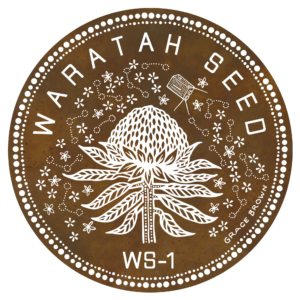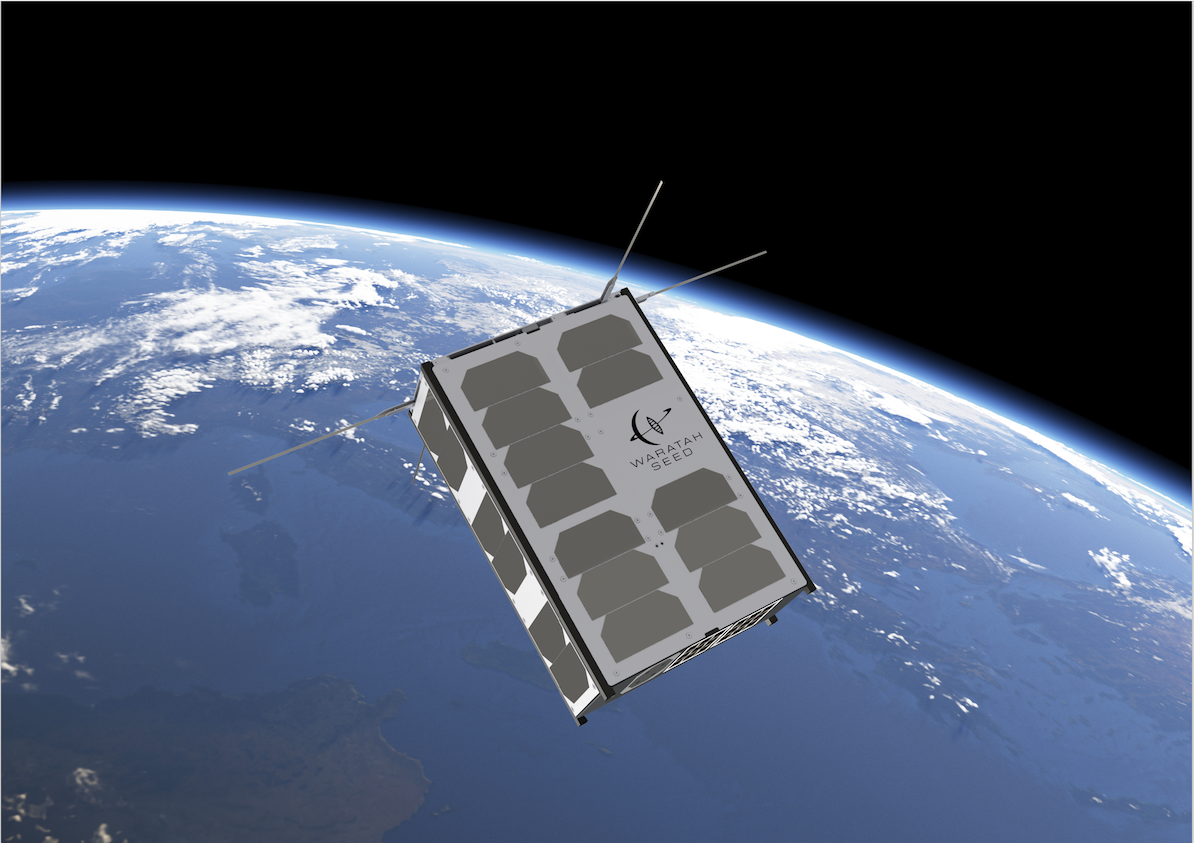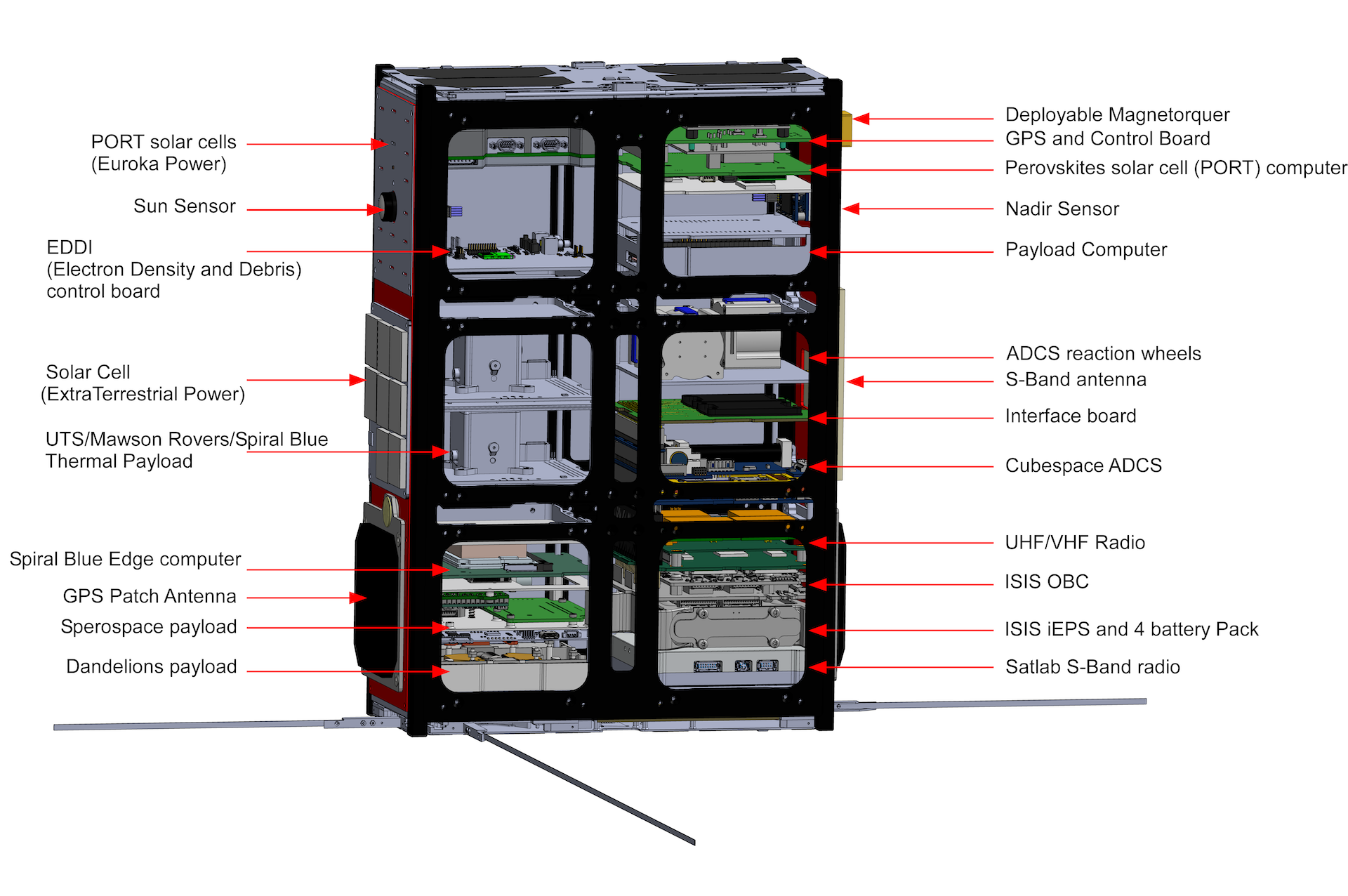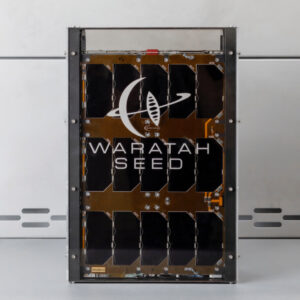Mission Motivation and Objectives:
The objectives of CUAVA’s flight programs are to train future engineers, industry people, and scientists in space and UAV applications and in commercialisation, to increase the capabilities of CubeSats and UAVs, to solve particular research problems, to flight-test new applications and services, and to develop the future workforce of the space and UAV industries in Australia.
The Waratah Seed-1 satellite is the third satellite designed, developed and launched by the CUAVA Training Centre. Waratah Seed-1 is a Pilot Space Qualification Mission initiated and partially funded by Investment NSW, and partially by client payloads, SmartSat CRC and the University of Sydney, with the aim of flight-qualifying first-generation payloads developed by NSW small business startups and research institutions. Waratah Seed-1 directly addresses three of the Centre’s goals of flight-testing new technology, training future engineers, industry people and scientists in space applications and commercialisation, and developing the future workforce of the space industry in Australia.
Waratah Seed-1 is a 6U CubeSat that carries payload technology from 3 Universities, 5 small technology startups (selected via a competitive process), and 1 commercial partner.
Payloads on board the Waratah Seed-1 are:
- a novel spacecraft thermal management system (Matilda) developed by Mawson Rovers and UTS, using a 3D printed heat sync payload with an integrated phase-change material which releases thermal energy over a period of time.
- a GPS reflectometry payload (Harry3) developed by the Australian Centre for Space Engineering Research at UNSW, designed to monitor ocean conditions remotely by measuring signals scattered off the waves.
- a Perovskites in Orbit Readiness Test (PORT-2) designed by EurokaPower, the University of Sydney Space Solar Cell Research team, led by Anita Ho-Baillie, designed to improve the cost, performance and durability of spacecraft solar cells that could be manufactured in Australia.
- an innovative space edge computing system, SE-2, designed by Spiral Blue, a version upgrade from prototypes successfully launched in 2021 and 2022, which aims to deliver in-orbit image processing and delivery of near real-time observation data onboard Earth observation satellites.
- an experimental meta-material developed by Dandelions, using natural fibres such as flax and hemp, which aims to provide a cost-effective, heat-resistant alternative to carbon fibre for use in spacecraft insulation.
- innovative solar cells based on terrestrial silicon technologies designed by ExtraTerrestrial Power, which aim to make the cells more resistant to radiation and significantly increase their operating life in space.
- subsystems and sensors for a robot arm in development by Sperospace, designed to enable on-orbit satellite maintenance, assembly, manufacturing and debris removal using unique tactile grips developed by partners, Contactile.
- a submillimetre particle detection system (SPaDeS) designed at the School of Physics at the University of Sydney, designed to detect space debris particle impacts on satellites, and to measure the Earth’s ionospheric plasma.
- an ElectroPermanent Magnetorquer (E-Mag), designed and built by the University of Sydney and start-up Deneb Space to measure and change the positioning of the satellite using much less power than conventional attitude determination and control systems.
Testing was carried out at the National Space Test Facility at ANU. Waratah Seed-1 was delivered in Q2-2024 to ExoLaunch in Germany, and launched on the SpaceX Transporter 11 mission from the US alongside the CUAVA-2 satellite in August 2024.









